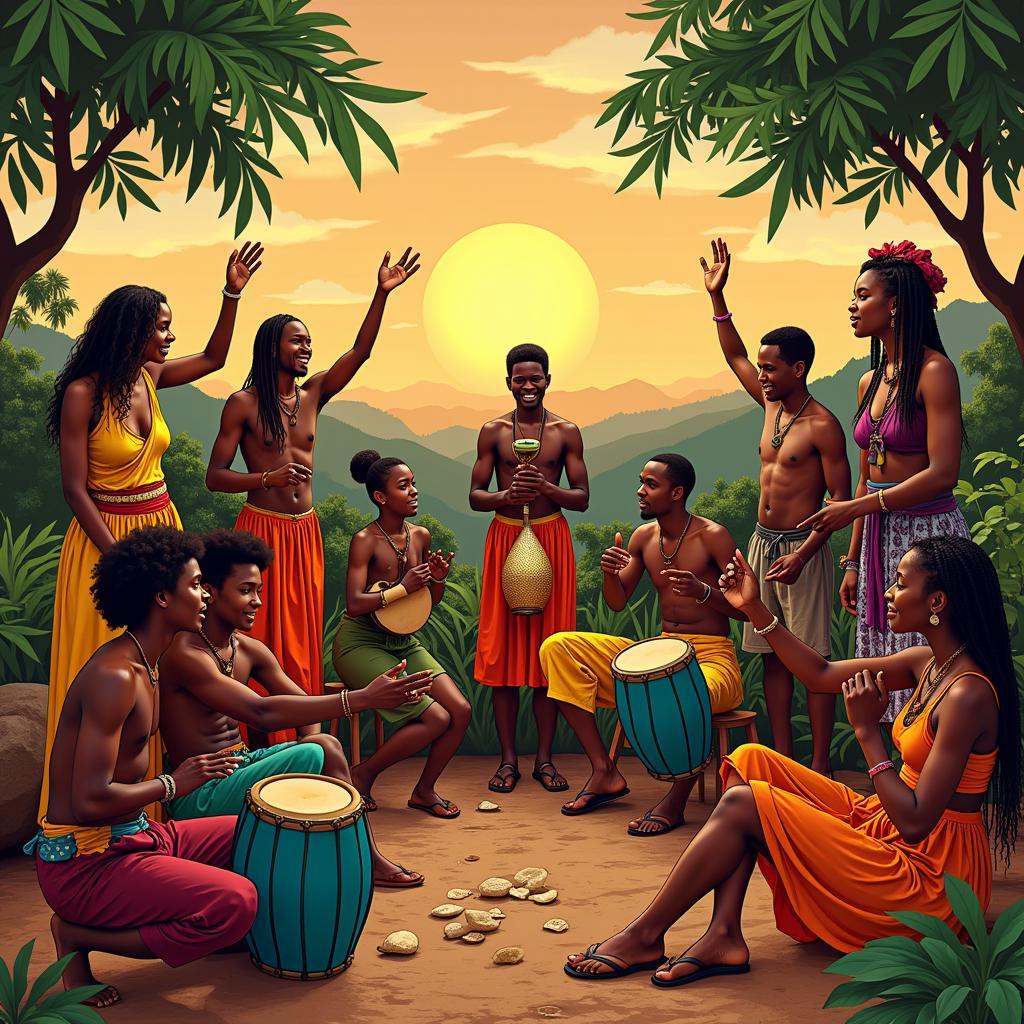African Dresses and Skirts: A Colorful Tapestry of Culture and Style
From the vibrant kente cloth of Ghana to the flowing white robes of the Sahara, African Dresses And Skirts are a stunning display of the continent’s rich cultural heritage and diverse artistic traditions. More than just garments, they are powerful symbols of identity, status, and history, each thread woven with stories passed down through generations.
A Kaleidoscope of Colors, Patterns, and Textures
African textiles are renowned worldwide for their bold colors, intricate patterns, and diverse textures. From hand-woven fabrics like kente, aso oke, and bogolanfini to printed designs featuring intricate batik or Ankara prints, the variety is astounding. Each region and ethnic group boasts its unique designs, often incorporating symbolic motifs, geometric shapes, or representations of nature. For example, the Adinkra symbols of Ghana, often found on kente cloth, convey powerful messages about life, history, and philosophy.
Beyond Aesthetics: The Significance of African Dresses and Skirts
In many African cultures, clothing goes far beyond mere aesthetics. It serves as a visual language, communicating a person’s social standing, marital status, ethnicity, and even their role within the community. The vibrant red ochre worn by Himba women in Namibia signifies their connection to their ancestors, while the elaborate headdresses of the Yoruba people in Nigeria reflect social hierarchy and spiritual beliefs.
A Fusion of Tradition and Modernity
Today, African fashion is experiencing a global renaissance. Designers across the continent are reimagining traditional styles, blending indigenous fabrics and techniques with contemporary silhouettes and cuts. This fusion of tradition and modernity has captivated the world, bringing African fashion to international runways and influencing global trends.
Exploring the Diversity: From Boubous to Kente
From the flowing boubous of West Africa to the beaded skirts of the Maasai, the variety of African dresses and skirts is as vast as the continent itself. Let’s delve into some iconic examples:
- Kente: Originating from Ghana, kente is a handwoven cloth made from silk and cotton, renowned for its bright colors and intricate geometric patterns. Each design carries symbolic meaning, reflecting proverbs, historical events, or social values.
- Boubous: These long, flowing robes are commonly worn in West African countries like Senegal, Mali, and Gambia. Often made from vibrant cotton fabrics, boubous are versatile garments worn by both men and women for various occasions.
- Shuka: The Maasai people of East Africa are known for their striking red shukas, rectangular pieces of fabric draped around the body. The color red holds cultural significance, symbolizing strength and bravery.
- Dashiki: This colorful, loose-fitting tunic, originating from West Africa, has become a symbol of pan-African identity. Often adorned with intricate embroidery or patterns, dashikis are worn by men and women alike.
Preserving Heritage, Empowering Communities
The resurgence of interest in African dresses and skirts not only celebrates the continent’s rich cultural heritage but also empowers local communities. By supporting artisans and designers who preserve traditional techniques and utilize locally sourced materials, we contribute to the economic growth and sustainability of these communities.
From everyday wear to special occasions, African dresses and skirts continue to captivate the world with their vibrancy, artistry, and the stories they tell. By embracing the beauty and diversity of these garments, we celebrate the spirit of Africa and its enduring legacy.

